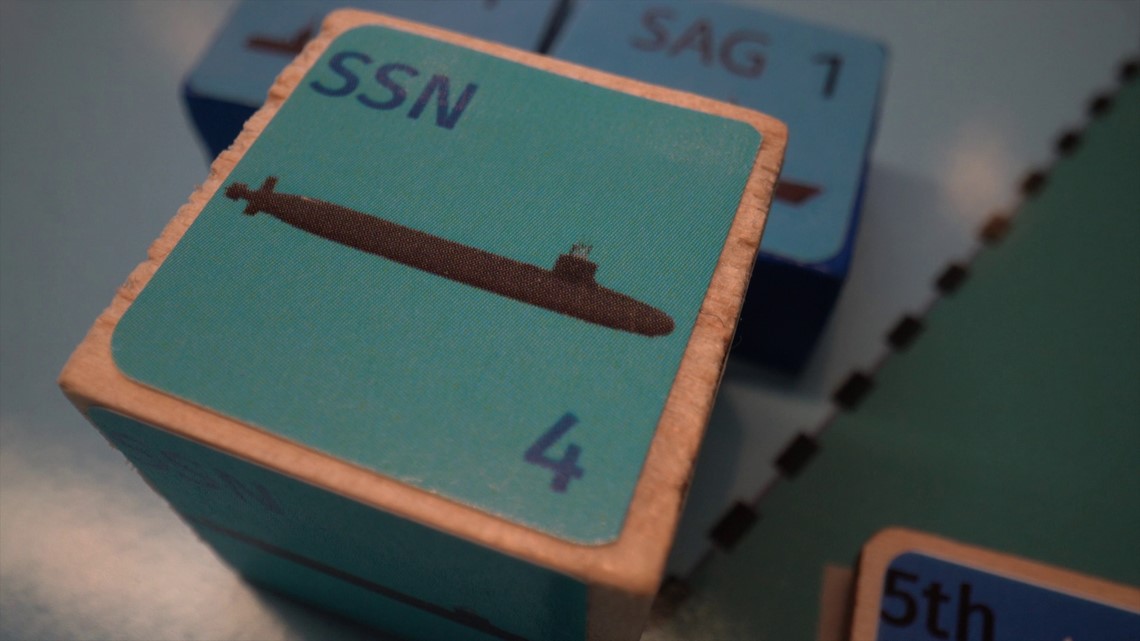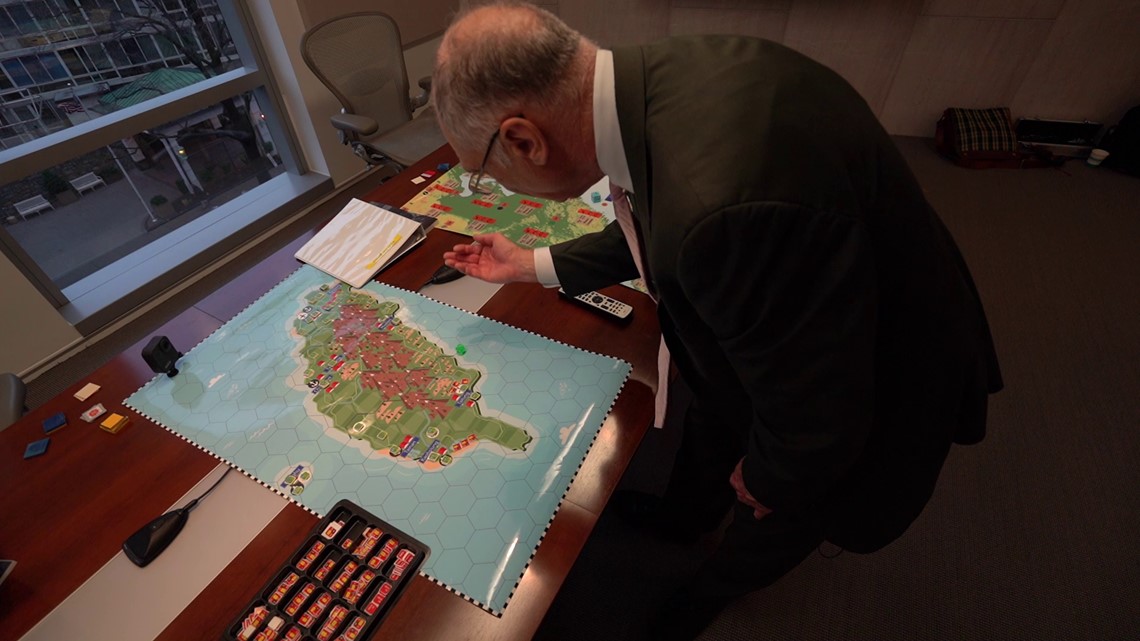WASHINGTON — Pieces on a board, each one symbolizing an American air force squadron, or an American aircraft carrier with thousands of U.S. Navy sailors on board.
These aren’t just adults playing on a colorful game board. They’re simulating how a war between the U.S. and China over the Island of Taiwan would happen.
"A very, very intense war. One like we haven’t seen in many decades," said CSIS's Eric Heginbotham.
This is the Center for Strategic and International Studies in Northwest DC. CSIS is the same group that accurately predicted how a coronavirus would spread, six months before COVID-19 hit.
Mark Cancian, a retired Marine colonel and Heginbotham, a retired Army Captain, have decades of analytic experience. Now, they have their eye on another potential threat to American lives.
"In the space of three weeks, we lose dozens of ships, hundreds of aircraft, thousands of personnel," said Cancian.
The complicated rules of this tabletop war game which runs several hours involve a lot of math, spreadsheets, and 20-sided dice to simulate the randomness of war.
CSIS chose the year 2026 for their simulation based on the limit of publicly known military budgets.
The scenario: the Taiwanese vote for a constitutional referendum affirming their separation from mainland China. Fearing Taiwanese independence, the Chinese Communist Party spends the next month gathering its army towards troop transport ships.
To protect democratic Taiwan, The United States 7th Fleet moves aircraft carriers USS Abraham Lincoln and USS Ronald Reagan towards the American base in Guam. China strikes with a massive surprise missile attack.
"These are very precise missiles that we’re talking about. They exist literally in the thousands. We have not seen a large-scale missile war," remarked Heginbotham.
Lincoln is sunk, Reagan is heavily damaged, and thousands of sailors are lost in the Pacific Ocean.
"We no longer have, for example, amphibious aircraft that can go out and pick up survivors. We may or may not be in a position to pick up survivors immediately," said Heginbotham.
The same Chinese attack strikes American air bases in Japan and Guam.
"Even when U.S. bases are hit hard when ground crews by the dozens and hundreds are killed or injured at those air bases, are we then willing to fly in more aircraft to replace entire squadrons which may have been destroyed," questioned Heginbotham.


After its greatest loss since World War Two, American reinforcements sail from as far as Norfolk, Virginia to join Australian, Philippine and Japanese allies.
Depending on how much lead-in time the U.S. Navy of 2026 had before the beginning of the war, those forces could include the Carrier Strike Groups surrounding USS Carl Vinson, USS Theodore Roosevelt, USS George Washington, USS John C Stennis, USS Harry S Truman, USS George HW Bush, USS Gerald R Ford and USS John F Kennedy.


American submarines and jets lead the counterattack taking out the majority of Chinese troop transports. Some get through, and Chinese forces land on the southern half of Taiwan but face resistance from the Taiwanese Army.


"If they lose their amphibious fleet and they have tens of thousands on shore in Taiwan, that means tens of thousands of prisoners of war, which puts their regime in jeopardy," predicted Heginbotham.
The wargame tallied up the total deaths after three weeks of battle:
- China: 10,000, with nearly 30,000 taken prisoner
- Taiwan: around 5,000 servicemembers killed, with more civilian casualties.
- America: around 5,000 servicemembers killed and many more wounded.


"We lose about half as many in three weeks as we did in 20 years in Iraq and Afghanistan," remarked Cancian.
Time and time again, around 25 times, most simulations had the same result: a free and independent Taiwan, a costly victory for the U.S. Navy and Air Force, China humiliated, and a global economic disaster.


CSIS knows China is also running wargames, and they have a message for their Chinese counterparts:
"It’s not just a question of saving lives. They might be willing to expend those lives. It would also endanger the Chinese Communist Regime. Losses on this scale, the embarrassment of military failure might overthrow the regime," said Cancian.
"I hope they are doing the same type of wargaming and understand the risks they would run," said Heginbotham. When asked what he does to personally counter the dark nature of what the CSIS team studies, Heginbotham responded, "There’s a reason why I sometimes go home and watch comedy specials after work."

